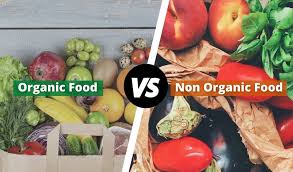Organic and Non-Organic Food
Introduction
The debate between organic and non-organic food has gained significant attention as consumers become more health-conscious. This essay explores their similarities and differences in production methods, nutritional content, environmental impact, taste, and cost.
Production Methods
Organic food is produced without synthetic fertilizers, pesticides, or GMOs, relying instead on natural methods like crop rotation and composting. In contrast, non-organic food is grown using chemical fertilizers and pesticides, resulting in higher yields but raising concerns about chemical residues
.Nutritional Content
Some studies suggest organic foods may contain higher levels of certain nutrients, such as vitamins and antioxidants. However, the nutritional differences are often minimal, and both types can contribute to a balanced diet.
Environmental Impact
Organic farming practices are generally more environmentally friendly, promoting biodiversity and reducing pollution. Non-organic farming can lead to soil degradation and water contamination due to synthetic chemicals.
Taste
Many consumers believe organic foods taste better due to their freshness and lack of artificial chemicals. However, taste is subjective, and some may not notice a significant difference.
Cost
Organic foods typically cost 20-50% more than non-organic options due to labor-intensive practices. This price disparity can influence consumer choices.
Conclusion
Ultimately, the choice between organic and non-organic food depends on individual preferences regarding health, environmental concerns, and budget. Both can play a role in a healthy diet.


